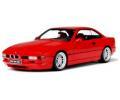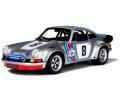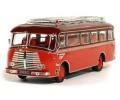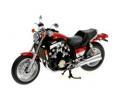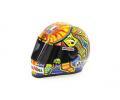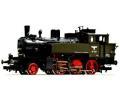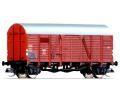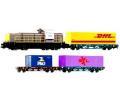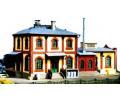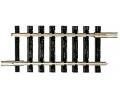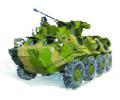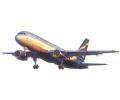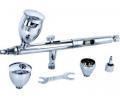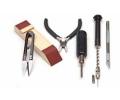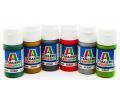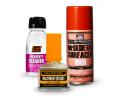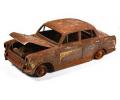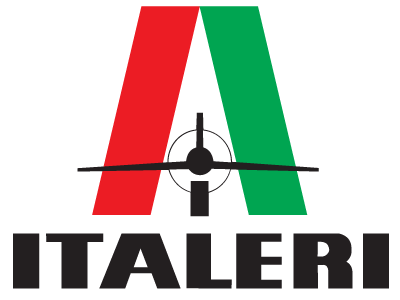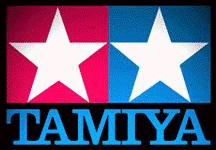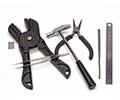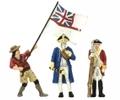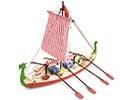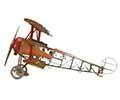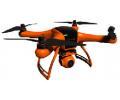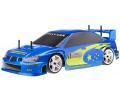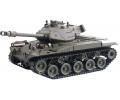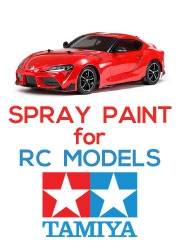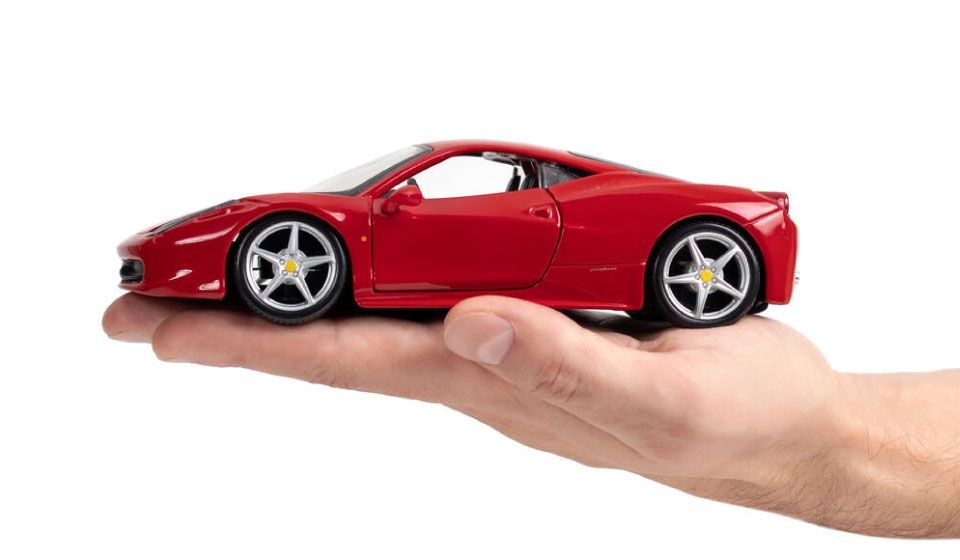Details
1:35 German Sturmpanzer IV - 2 figures
The Panzerkampfwage IV has been described most aptly as the "workhorse" of the German armoured forces in World War 2; with continuous development throughout the war as a fighting tank, the chassis and running gear formed the basis of a number of very important self-propelled weapons.
In 1942 the fighting on the Eastern Front was making even greater demands on German armoured resources, as the Soviet Army overcame the setbacks of the successful German campaign in Russia in 1941.
At this time, divisional armour consisted predominantly of the Pz Kpfw III and the Stug III, the latter being armed mainly with either the short 7.5 cm gun, 10.5 cm howitzer. The need was for a heavier calibre weapon mounted in an armoured chassis, sufficiently powerful for the demolition of big city buildings in the street fighting now being experienced.
In September 1942 the German Ordnance Dept considered how the problem could best be overcome as rapidly as possible. The 15 cm heavy infantry gun, Model 1933 was a readily available weapon, and some limited experience of it in an armoured role had been gained in 1940 when a small number of Sig 33's were mounted on the tiny Pz Kpfw I chassis. The original success of this limited conversion had led, in 1941, to the decision to build a self-propelled version of the Sig 33 on the Pz Kpfw III chassis. This was like a much heavier version of the original Stug III, except that the superstructure was very much higher to accept the greater bulk of the 15 cm howitzer. By the time of the Stalingrad fighting a first pre-production run of 12 of these vehicles was available.
By this time, however, the Pz Kpfw IV was rapidly becoming the most numerous and most important of the German combat tanks, due to its ability to carry the long 7.5 cm high-velocity gun. In October 1942, the deliberations about the heavy assault vehicle attracted Hitler's personal attention. He ordered that the Sig 33 gun be fitted on the Pz Kpfw IV chassis. Due to the urgent requirement for a street fighting vehicle, the project to fit a 15cm howitzer to the Pz Kpfw IV chassis was given top priority. The new vehicle, designated Sturmpanzer IV, was improved in respect of armour protection as a result of the Stalingrad experience. The Sig 33 was modified, with its barrel in an armoured sleeve, and the resulting weapon was designated Sturmhaubitze 43 L/12. A box like armoured superstructure with sloped sides replaced the original tank superstructure. By any previous standards it was massively armoured, 100 mm on the front plate, with the nose of the vehicle given additional armour with a total thickness of 80 mm. The superstructure sides were up to 70 mm thick, and the back was up to 78 mm thick. The additional weight of the heavy armour took the total weight of the vehicle up to 30.4 tons as compared to the 22 tons of the basic Pz Kpfw IV tank. By April 1943, only six months after the requirements were finalised, the first vehicles were in service on the Russian front.
Later vehicles were built on successive production chassis of the Py Kpfw IV and there were thus Sturmpanzers IV on the Ausf G, H and J chassis. The last production type, on the J chassis, weighed less, at 28.2 tons, due to the simplifications introduced on this final type of Pz Kpfw IV chassis.
A total of 313 Sturmpanzer IVs were built by 1945 and they served on all fronts in 1944 - 45 though were initially used on the Russian Front when first in service in 1943. Lack of close in machine gun protection proved a serious disadvantage in the close range conditions of street fighting, so the later vehicles were fitted a ball mount machine gun high on the front superstructure front. The main armament was itself in a ball-type mantlet with a heavily armoured sleeve. The later production vehicles had a commander's cupola replacing the plain roof hatch originally fitted, and an MG 34 in an AA mount was usually fitted to the cupola.
In the street fighting and close assault role of the Sturmpanzer IV was highly successful, being difficult to penetrate except by the most powerful antitank weapons at close range. The vehicle fully lived up to its name of Brummbar (Grizzly Bear) which was given to it in 1943. The chassis was very much overloaded, which led to a breakdown and the need for extra careful maintenance. The Brummbar was in service until the end of the war in 1945 and has remained one of the best remembered due to its massive appearance.
Weight 28.2 tons (late vehicles) or 30.4 tons (early).
One Stuch 43 L/12 with 38 rounds of ammunition (HE/HC/Smoke).
Elevation limits 30 degrees to minus 8.5 degrees.
Traverse 8 degrees each side. Range 4,700 yds.
Top road speed 23.7 mph, cross country 9.5 mph.
Range 80/125 miles.
Additional Information
| Article No | TAM35077 |
|---|---|
| Article No of Manufacturer | 35077 |
| Аvailability | Out of stock |
| Colour | For colouring |
| Scale | 1:35 |
| Manufacturer | TAMIYA |
| Brand | No |
| Series | No |
| EAN | 4950344996551 |
| Material | Polystyrene (plastic). |
| Epoch | 1939-1945 World War II |
| Age recommendation | Not suitable for children under 14 years. |


